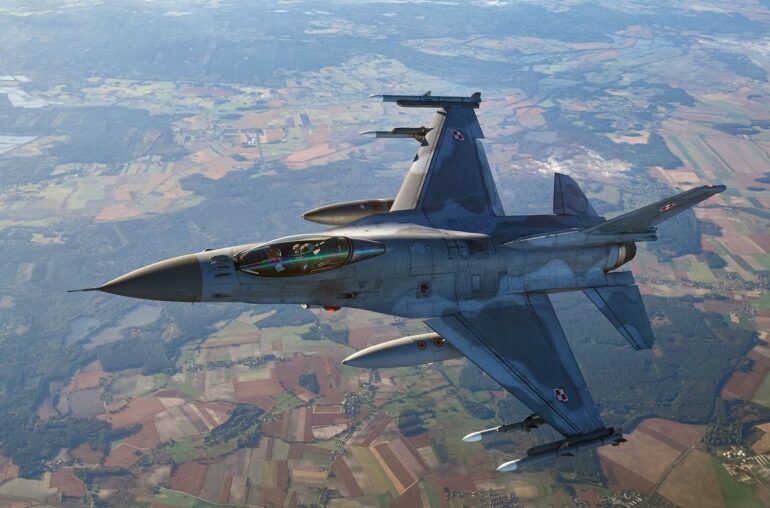On the night of July 27, 2025, the skies over Eastern Europe buzzed with tension as NATO fighter jets, including Polish and Swedish aircraft, scrambled to respond to a massive Russian drone and missile assault on Ukraine. The attack, one of the largest of its kind, saw Russia launch 324 drones and seven missiles, targeting civilian and military sites across Ukraine, including the capital, Kyiv. The assault not only heightened regional tensions but also raised alarms across NATO’s eastern flank, as one drone strayed into Lithuanian airspace from Belarus.
A Night of Chaos in Ukraine
The Russian barrage began Sunday night, with explosions lighting up the Ukrainian sky. According to the Ukrainian Air Force, 309 drones and two missiles were either shot down or neutralized through electronic warfare. However, 15 drones and two missiles struck three locations, causing significant damage. In Kyiv, a drone hit a residential high-rise, injuring at least eight people, including a three-year-old child. In the Sumy region, near the Russian border, a drone strike on a bus killed three people and injured 19 others. Additional explosions rocked Kropyvnytskyi, and Russian Kinzhal hypersonic missiles targeted a Ukrainian Air Force base in the Khmelnytskyi region.
Ukrainian President Volodymyr Zelenskyy condemned the attacks, emphasizing the need to strengthen Ukraine’s air defenses. “We are constantly strengthening the Ukrainian air shield,” he wrote on Telegram, noting ongoing efforts to secure funding for drone production. Andriy Yermak, head of Zelenskyy’s office, called the attack proof of Russian President Vladimir Putin’s refusal to pursue peace. “This is how Putin responds to calls to end the war,” Yermak stated, urging tougher sanctions and enhanced military support for Ukraine.
NATO’s Swift Response
As the Russian assault unfolded, Poland, a NATO member bordering Ukraine, activated its air defenses. The Polish military’s Operational Command reported that Polish and allied aircraft, including Swedish JAS 39 Gripen fighters stationed in Poland, were scrambled to secure Polish airspace. Ground-based radar and air defense systems were placed on high alert for three hours. By early Monday, July 28, the Polish military confirmed that no violations of its airspace had occurred, and the deployed forces returned to normal operations.
The incident wasn’t confined to Poland. A Lithuanian Defense Ministry official told ABC News that a Russian drone had crossed into Lithuania from Belarus, a close Russian ally. A search for the drone was underway as of Monday morning, highlighting the growing risk of the Ukraine conflict spilling into NATO territory. Yermak warned that such incidents were deliberate tests of NATO’s resolve, stating, “Drones entering the airspace of the Baltic countries are signals that cannot be ignored.”
Why This Matters
This latest escalation comes at a critical time. Poland has scrambled jets at least three times this month to counter Russian attacks on Ukraine, reflecting growing concerns among NATO’s eastern members about the war’s spillover risks. The conflict, now in its third year, shows no signs of slowing, with recent peace talks in Istanbul on July 23 failing to produce a ceasefire. Russia’s Defense Ministry, meanwhile, claimed to have shot down seven Ukrainian drones overnight, signaling that both sides remain locked in a cycle of retaliation.
For Ukraine, the human toll is stark. At least four civilians were killed and 40 injured across the country in the past day, according to Ukrainian authorities. The targeting of civilian infrastructure, like the Kyiv high-rise, underscores the war’s devastating impact on ordinary people. For NATO, the drone incursion into Lithuania raises questions about how to respond to Russian provocations without escalating the conflict further.
What’s Next?
As Russia continues its aggressive campaign, Ukraine is pushing for more international support to bolster its defenses. Zelenskyy has called for stronger partnerships to close the funding gap for drone production, while Yermak advocates for long-range capabilities to counter Russian aggression. On the diplomatic front, the failure of recent peace talks suggests that Russia is prioritizing its military objectives over negotiations, as Kremlin spokesman Dmitry Peskov emphasized the need to achieve Moscow’s “war goals.”
For NATO, the repeated need to scramble jets and the breach of Lithuanian airspace highlight the delicate balance of deterring Russia while avoiding direct confrontation. As tensions simmer, the world watches closely, aware that the conflict’s ripple effects could reshape the security landscape of Eastern Europe.
